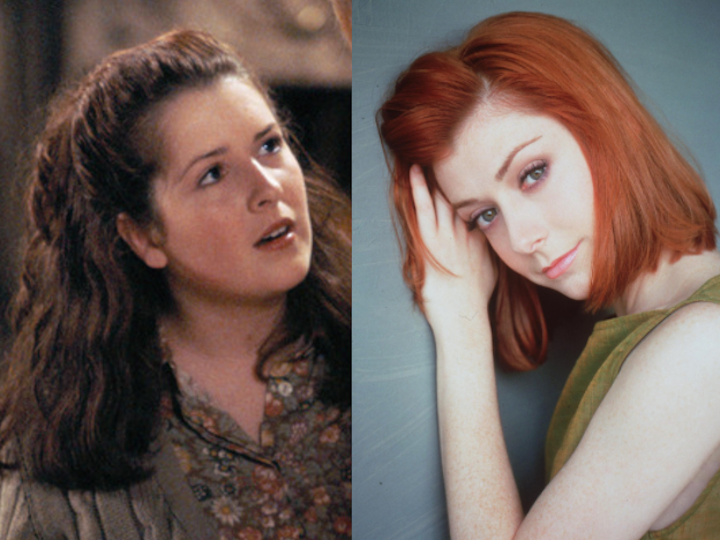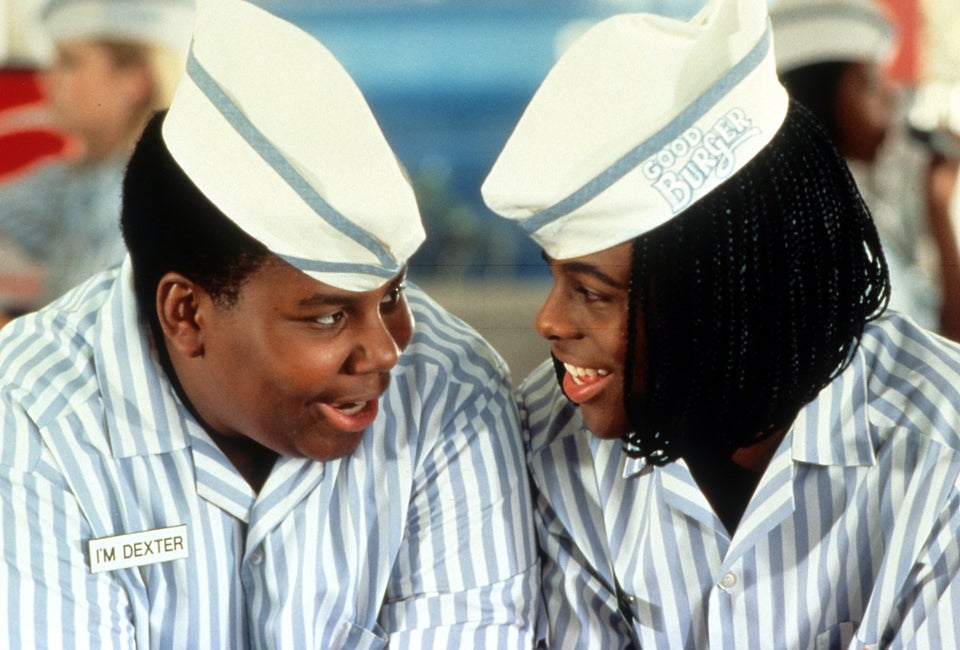A brunette Buffy Summers walks the halls of Berryman High School on her first day, befriends a very different Willow, and still kicks ass, if only for 25 minutes. Into every generation a slayer is born, but before we knew her as our chosen one ― or as a member of the Scooby Gang, for that matter ― there was another version of the slayer running around staking bad guys in between classes and nights out at The Bronze.
Friday marks the 20th anniversary of the “Buffy the Vampire Slayer” premiere. As fans celebrate the series’ lasting cultural impact — a slew of official anniversary merchandise was released last week ― let us revisit the show’s humble and admittedly cheesy beginnings. In order to understand why Buffy captivated a generation and transformed teen storytelling on TV as we know it, it’s time to reclaim the series’ own origin story as an essential part of its legacy. Brace yourselves, “Buffy” purists. We’re talking about the unaired and much-derided pilot, because if you can’t love Buffy at her worst, you certainly don’t deserve her at her best.
Before “Buffy” came into being, creator Joss Whedon and company shopped the series around to networks in hopes that a vampire slayer might feel more at home on television than she did in the movies. A film version starring Kristy Swanson as the titular cheerleader-turned-demon-hunter hit theaters in 1992 and promptly left with little fanfare. Years later, Gail Berman, who owned the rights to the feature, made it her mission to breathe new life into the concept with the help of Whedon by pitching the project as a TV show. After NBC and Fox passed, the motley crew of writers and producers arrived at the fledging WB network, which ordered a pilot presentation then and there. And so, the unaired pilot was born.
It’s not unusual for a series to put together a presentation before filming a pilot ― all it takes is a Google search to find unaired episodes of “The Big Bang Theory” and “30 Rock” ― but rarely is one bootlegged and circulated so heavily in fan communities. A quick glance at comments on the many copies that found a second life on YouTube reveals just how strongly Whedonites feel about “Buffy” 1.0. In between those bowled over by the gloriously ‘90s fashions, you’ll find just as many people criticizing the production value, casting choices and everyone’s early acting abilities. Most express a sheer disbelief that the presentation ever convinced a network to make a full series order.
Even the patron saint of Buffydom himself legitimized the narrative that this early iteration was to be considered more ugly cousin than canon. In a 2003 interview with IGN, Whedon declared that the pilot would never see the light of day “while there is strength in these bones” and insisted that despite the archival and historical value, it still “sucks on ass.”
Rough around the edges? Yes. But the unaired presentation is hardly deserving of the fan vitriol or complete denouncement by its creator. Running about half as long as the pilot, “Welcome to the Hellmouth,” the presentation opens in an almost identical fashion, with Whedon’s trademark subversion of the pretty blonde as the instant victim. Dressed in a schoolgirl outfit, Darla (Julie Benz), a 400-year-old vampire who would go on to appear throughout the series, lures an unsuspecting boy into the high school at night to feast.
What follows is a condensed and slightly more cutesy version of the series’ first entry that still manages to capture what made “Buffy” great, albeit with some noticeable changes. The first wrinkle in this alternate universe is the name of the iconic Hellmouth-covering Sunnydale High, which goes by Berryman High. Not-long-for-this-world Principal Flutie, played by Stephen Tobolowsky in this version, is the next. He briefs Buffy (Sarah Michelle Gellar) — or “Bunny,” as he calls her — on school rules, like not hanging from the cafeteria rafters screaming “Meat is murder” on Sloppy Joe Day. The scene was one of a handful that never made it to air.
Due to the shortened runtime, the unaired pilot also has no mention of The Master, the ancient vampire who served as the season’s big bad, or Angel, Buffy’s doomed love interest throughout the series. Locations like the library, which is much more spacious than the one in the series, are also changed, as is the setting of the final fight scene, which is switched from the school’s auditorium to the graveyard at night.

A name change here and the recasting of a minor character there were easy enough to swallow for most diehards, but fans drew the line at another actress besides Alyson Hannigan playing Willow Rosenberg. In the unaired pilot, actress Riff Regan is the geek girl destined to become an all-powerful witch until she was recast for reasons Whedon has never revealed. Admittedly, Regan’s appearance is jarring at first, as Hannigan was the lifeblood of the series as it aged, at points becoming more popular among fans than Buffy herself. Here, Regan fails where Hannigan succeeds at immediately capturing the character’s quirkiness and supreme intelligence, although criticism of her performance is overblown.
There’s no argument to be made that the final product is superior. However, there’s something to be said about the strength in the unaired pilot’s bones. Despite the production value and the low-budget vampire “dusting” effects, the potential for greatness is just as clear as it was in the original pilot. Whedon’s dialogue, no matter how self-indulgent or unpolished in its early stages, is still distinctively his own. Buffy is the sarcastic heroine we know and love, striving to be a normal teenager in a supernatural world. Xander (Nicholas Brendon), whose character across the two pilots is perhaps the most consistent, remains perpetually friend-zoned and just as relatable. And as for Cordelia (Charisma Carpenter)? Well, she still steals every scene with deliciously bitchy lines like, “I see you’ve found the softer side of Sears.”
After seven seasons of ass-kicking, looking back at the 25-minute dress rehearsal reminds us why “Buffy” is so special after all of these years: it still stood for something. Even at its most elemental level, the show succeeds as a commentary on the horrors of high school, using its supernatural elements to explore the shared fears over rejection and being accepted. Had it not been for the experimentation in the unaired pilot, these ideas might have never been finessed in later episodes, as the series found its footing toward the end of the first season.
Genre television shows tend to get better with time, as opening episodes are overburdened with character exposition and world building. Even the “Buffy” pilot that made it to air is a far cry from the series strongest entries in the second and third seasons. For a fandom that prides itself on embracing expansions of the “Buffy” universe in the form of comic books, video games and even spinoffs, bringing the unaired pilot back into the fold as #BuffySlays20 is long overdue. So as you celebrate the series’ 20th anniversary watch the unaired pilot, laugh at the goofy special effects, praise the gods and goddesses for recasting Willow, but remember why you fell in love with Buffy in the first place.


